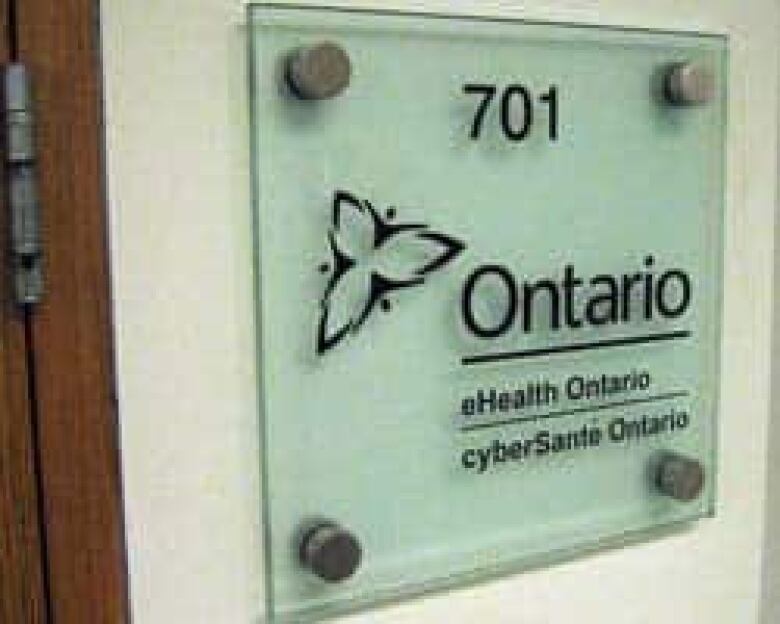Electronic health records: potholes on the road to eHealth
Canadians are heavy users of the health-care system. Every year, there are 322 million office-based visits to the doctor. The vast majority of them 94 per cent result in handwritten paper records.
Those records your health history normally stay in a file folder in your doctor's office, inaccessible to a medical professional who might appreciate the information they contain when you're facing a medical emergency and are unable to communicate.
Making those records available in an electronic format has been on the federal government's to-do list for nearly 20 years. But it took until Sept. 11, 2000, for Ottawa to commit substantial cash to get the ball rolling.
The federal government announced that it would set aside $500 million for "an independent corporation mandated to accelerate the development and adoption of modern systems of information technology, such as electronic patient records, so as to provide better health care."
The following March the money went to Canada Health Infoway Inc., a not-for-profit organization set up to bring Canada's health-care system into the 21st century.
Canada Health Infoway says better access to information will enable clinicians to:
- Devote more time to patients.
- Improve patient safety by reducing the risk of errors that could be prevented by access to a patient's complete health record.
- Deliver more efficient care, leading to lower costs and shorter wait times.
Canada Health Infoway has received $2 billion towards the revolutionizing of the nation's health records. While the agency's goal is electronic health records for all Canadians by 2016, so far, only five per cent of records are electronic. But the agency expects half of health records to be electronic by the end of 2010.
Canada Health Infoway says fully electronic health records will save the health-care system $6 billion a year.
Ontario's rocky road

The SSHA was created in 2002 to electronically connect health-care professionals to each other and to patient information across the health-care system. However, it was plagued with trouble almost from the start.
In January 2007, Deloitte Consulting released a scathing report about the SSHA. Among its findings was that the agency had no strategic plan. It also found:
- Few health-care organizations were aware of what the organization was or did, and those that do aren't particularly pleased with it.
- Only a third of the 60,000 "secure" email accounts that were set up were being used.
- Privacy policies were not understood in an agency that was expected to host sensitive health information.
The agency's management board said it accepted the report, did not argue with its recommendations and would work to address problems. The SSHA had received almost $500 million in funding to that point.
A year later, the Ontario government decided to shift gears and create a new agency to handle the transition to eHealth. It merged all existing electronic health programs under a new organization eHealth Ontario.
The primary goal is electronic health records for all residents of the province by 2015. The new agency would also focus on three areas:
- A diabetes registry.
- An eHealth portal to centralize health information on one website.
- Electronic medication prescribing, which would eliminate handwritten prescriptions with the goal of reducing medication errors.
However, eHealth Ontario has come under criticism as well. In April 2009, the province's opposition parties argued that the government wasted $647 million developing electronic health records before they shut down the SSHA only to start again from scratch with eHealth Ontario. They also criticized the new agency's CEO Sarah Kramer for spending $51,000 on office furniture.
A month later, the province's auditor general said he was reviewing the agency's spending.
On May 12, 2009, eHealth Ontario announced that it had launched Canada's first electronic prescribing program. The agency describes ePrescribe as "the process of generating, authorizing and transmitting prescriptions from doctors and other prescribers to pharmacists and other dispensers."
It eliminates handwritten prescriptions. For now, it's a pilot project limited to two family practices in two communities.
Other jurisdictions fare better
According to a Commonwealth Fund study conducted in 2007, only 23 per cent of Canadian physicians were using some form of electronic medical record. That compares to 98 per cent in the Netherlands, 92 per cent in New Zealand, 89 per cent in the U.K. and 79 per cent in Australia. While Canada has a long way to go, it's still far ahead of the United States, where a badly fragmented system has made the adoption of electronic health records difficult.
According to Canada Health Infoway, in the absence of a comprehensive electronic health record system, for every 1,000:
- Hospital admissions: 75 people will suffer an adverse drug event.
- Laboratory tests performed: up to 150 will be unnecessary.
- Emergency room visits: 320 patients will have an information gap, resulting in an average increased stay of 1.2 hours.
But the agency says by the end of 2010 Alberta, Prince Edward Island and the Northwest Territories should have all the elements of a basic infrastructure for delivering electronic health records in place. Quebec and British Columbia are not far behind.
In those jurisdictions, a provider should be able to retrieve a patient's health records within the region. The record could contain historical drug, lab, diagnostic imaging, some hospital clinical reports, and immunization data - no matter where the information originated. A patient would not have to remember drug histories or repeat lost or unavailable tests.
Canada Health Infoway also notes that the move towards digital X-rays could improve the productivity of radiology specialists by 25 to 35 per cent. Already, 80 per cent of X-rays in Canada are digitized.












_(720p).jpg)


 OFFICIAL HD MUSIC VIDEO.jpg)
.jpg)



























































































